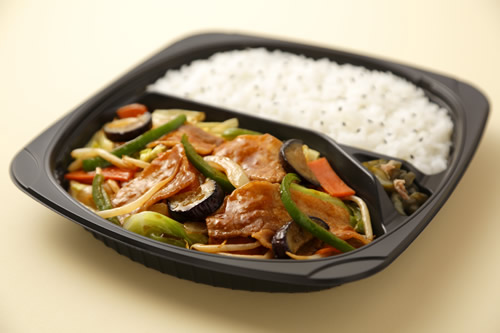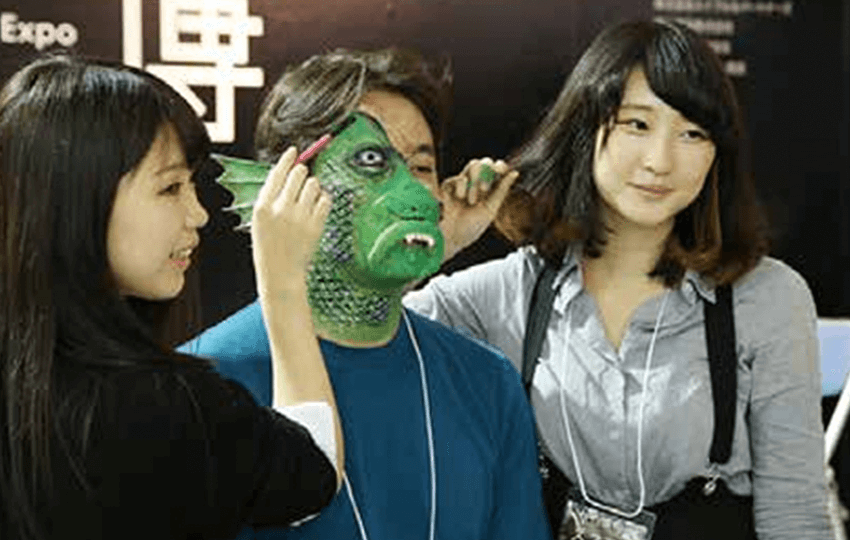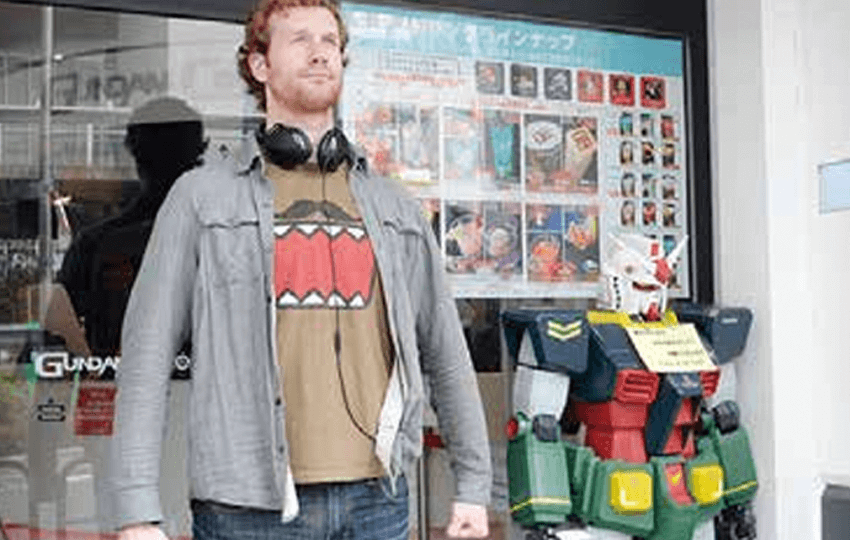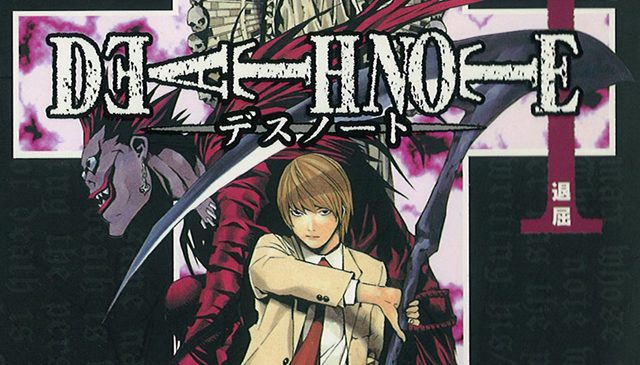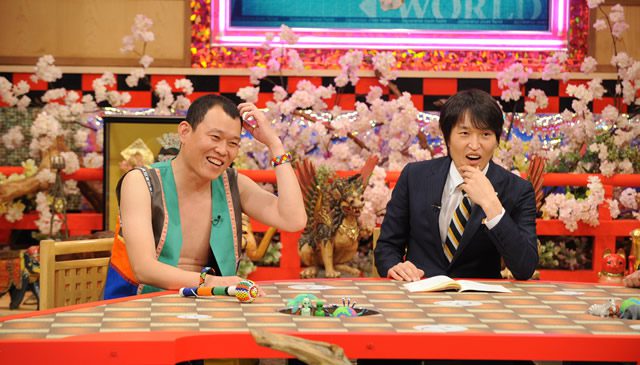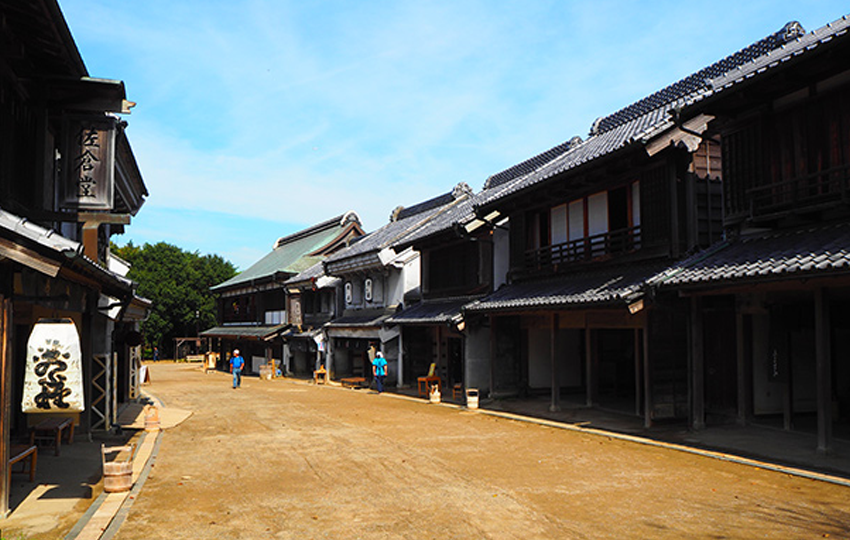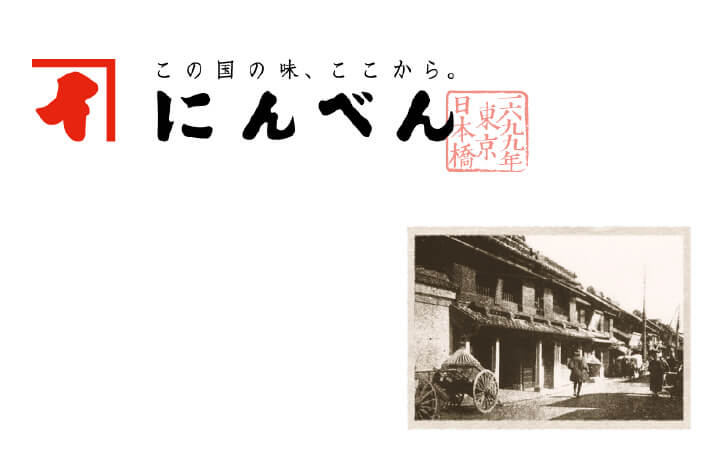-
[From April Issue 2015]
Origin Bento, a shop that sells side dishes and obento (pack lunches) to go, has a total of 566 stores in the Kanto and Kansai areas. There are more than 30 varieties of obento box available. The company prides itself on preparing dishes in store with healthy seasonal ingredients rich in nutrients that contain no artificial colorings or preservatives. Side dishes are arranged on a large platter in a glass display case at the counter and can be bought for 183 yen per 100 grams. The menu is altered according to the season.
[No. 1] Nori (Seaweed) Bento 299 yen
Okaka (bonito flakes), nori, and deep fried fish are served on a bed of rice. This standard bento dish is popular with people of all ages.

[No. 2] Nori Deep Fried Chicken Bento 399 yen
Deep fried chicken with a side serving of cabbage served on a bed of rice topped with okaka and nori.

[No. 3] Half a Serving of the Recommended Daily Vegetable Intake
Six Stir-fried Vegetables Bento 504 yenCabbage, bell peppers, onions, carrots, komatsuna (Japanese mustard spinach), and moyashi (bean sprouts) stir-fried in soy sauce. A flavor you’ll never tire of. Only available in the Kanto area.

Origin Bento[2015年4月号掲載記事]「オリジン弁当」は関東地区と関西地区で566店舗を展開している、持ち帰り用のお総菜とお弁当の店。お弁当の種類は30種類以上。合成着色料や保存料は使わず、店内で調理した商品を提供していること、安全な食材を使い、野菜は栄養価の高い旬のものを使っているのが特徴。ショーケースには大皿に盛られた総菜が並び、100グラム183円で買うことができる。季節にあわせてメニューは変わる。
【No.1】のり弁当 299円
ごはんの上におかか、のり、魚のフライなどが載っている。お弁当の定番で、年齢問わず人気。
【No.2】のりチキン竜田弁当 399円
おかかとのりが載ったごはんと、チキン竜田(鶏肉の唐揚げ)にキャベツを添えた組み合わせ。
【No.3】一日に必要な野菜の半分使用 6品目の野菜炒め弁当 504円
キャベツ、ピーマン、玉ねぎ、ニンジン、小松菜、もやしを醤油味でいためた。あきのこない味。関東地区限定。
-
[From April Issue 2015]
CHO Hikaru / ZHAO Ye
Artist
“I think the phrase ‘it’s beautiful’ is a phrase people formulate in their minds when they’ve seen something that has made an impression on them. So, when I receive such a compliment, I’m not happy because I don’t know if my artwork has really touched that person’s heart,” artist CHO Hikaru says. “If someone who sees my painting frowns involuntarily and says, ‘Yuck,’ it makes me happy because I feel like I’ve heard their true opinion.”
Cho mainly paints. Although she is still in her junior year in the Visual Communication Design department of Musashino Art University, she’s already known for working in a variety of fields, including painting, producing videos, and designing characters. Having entered into a contract with an apparel manufacturer, she also designs clothes and tights.
Cho became famous for her body painting, by painting realistic-looking art onto people’s skin. “When I was preparing for my entrance exams for art school, I had to paint still lifes every day. Then, I got fed up and wanted to make pictures of humans, so I tried painting an eye. I did it on the back of my hand because the art supplies I was using back then were expensive and only available at an inconveniently located store, which made it troublesome to go buy them,” she says with a laugh.
She loved the eye she had painted on her hand so much that she posted a picture of it on Twitter. Then, it was retweeted more than a thousand times. Cho says: “In those days, ‘Parasyte,’ a manga series about creatures living inside human bodies, was becoming popular; people thought my eye painting resembled one of these parasites and found it funny. I suppose they were also drawn to the fact that this weird painting had been done by a young woman.”
Knowing that trends quickly come and go in the world of the Internet, Cho thought her post would soon be forgotten. But even after six months, it was still getting retweeted. But the positive feedback didn’t stop there and before long she was being asked to perform on TV programs. When she exhibited her work requests came in from people who wanted to collaborate with her.
“I became famous before I had completed my artistic training, so I was criticized by some people who said that any artist could easily paint that kind of picture,” Cho says. “When I come across remarks badmouthing me or my works on the web, I take screenshots of them to reread later. I find them both instructive and funny. I’m the kind of person who can put things in perspective,” she says with a wry smile.
“I think the reason I turned out this way is partly because I was born in Japan to Chinese parents,” says Cho. “I’m treated as a Chinese person in Japan, and have to have my fingerprints and picture recorded when I enter the country, as if I were a potential criminal. In China, I’m viewed as more of a Japanese person because of my poor Chinese.”
“But because of this upbringing, I learned to look objectively at the way countries tend to strengthen unity by looking down on other countries,” says Cho. “It’s not what it seems” is a picture of a banana painted to look like a cucumber and is Cho’s favorite of her works to date. “I wanted to ask, ‘What can you tell about who someone is on the inside, just by looking at their skin color, nationality and other external aspects?’”
CHO Hikaru
Text: SAZAKI Ryo[2015年4月号掲載記事]

アーティスト
趙 燁 さん
「『きれいですね』は、人が何かを見て受けた印象を心の中で整理してから口にする言葉だと思うんです。ですからそうほめられても、自分のアートがその人の心に本当に届いたのかわからなくて、嬉しくありません」とアーティストの趙ひかるさんは言います。「私の絵を見た人が反射的に顔をしかめて『きもっ(気持ち悪い)』と言うのを聞くと、今この人の本音が聞けたと感じて嬉しいですね」。
趙さんは、ペイントを中心に活動しています。武蔵野美術大学視覚伝達デザイン学科の3年生ですが、すでに絵画や映像作品、キャラクターデザインなど、さまざまな活動で知られています。アパレルメーカーと契約して、服やタイツのデザインもしています。
趙さんを有名にしたのは、人の皮膚にリアルに描くボディーペイントです。「美大志望の受験生だったとき、毎日静物を描かなければなりませんでした。それで、もういやだ人間を描きたい、と思って目を描いたのです。自分の手の甲に描いたのは、当時使っていた画材が高価な上、不便な場所で売っていて買いに行くのが面倒だったからです」と笑います。
手に描いた目が気に入った趙さんは、その写真をツイッターに載せました。すると1000以上リツイートされました。「当時、人体に生き物が寄生するというまんが『寄生獣』が評判になっていたので、寄生獣みたいな絵だと面白がられました。若い女の子が変な絵を描いているということも話題性があったのだと思います」と趙さん。
趙さんは、ネットの世界は流行り廃りが激しいので、すぐに忘れられるだろうと思っていました。しかしリツイートは半年後も続いていました。反響はやまず、やがてテレビ局からも出演依頼が来たり展示などをしたとき、一緒に仕事をしたいと声をかけてくれる人が現れたりするようになりました。
「鍛錬をつむ前に有名になってしまったので、この程度の絵はだれにでも描けると批判されることもありました」と趙さん。「ネット上で私や私の作品をけなす発言を見ると、スクリーンショットを撮っておいて後で見返します。参考にもなるし、面白いとも思ってしまいます。物事を俯瞰(全体を上から見ること)して見る性格なので」とシニカルにほほえみます。
「私がこのような性格になったのは、中国人の両親のもと日本に生まれ育った影響があると思います」と趙さん。「日本では中国人と扱われ、入国の際に指紋と顔写真を記録されます。まるで犯罪者予備軍扱いです。中国では、中国語が下手なので日本側の人間と見なされます」と語ります。
「でもこの生まれ育ちのおかげで、他国をおとしめて自分たちの団結を強めようとする動きを、距離を置いて見ることができるようになりました」と趙さん。趙さんはお気に入りとして、バナナに色を塗ってキュウリに見せかけた作品「It’s not what it seems」を挙げます。「人間の肌の色や国籍といった外側だけを見て、その人の内面の何がわかるの?と言いたかったのです」。
趙 燁 さん
文:砂崎良 -
[From April Issue 2015]
Nagatanien
Tea in its many forms is deeply connected to Japanese history and culture. One of the most popular teas consumed today is sencha; a green tea invented by NAGATANI Soshichiro – founder of what was to become Nagatanien Co., Ltd. – in the Edo era (17-19th centuries). That is to say that originally the Nagatani family ran a tea production business. Sencha was eventually exported to Western countries and, along with raw silk thread, became one of Japan’s major exports.
In 1952, NAGATANI Yoshio, the tenth Nagatani to run the family business, developed “Ochazuke Nori” with his father Takezo so that people could easily consume delicious ochazuke (a dish of rice and tea) at home. At that time ochazuke nori was powdered shredded seaweed, seasoning, and arare (rice crackers) mixed together by hand. As neither aluminum foil nor polyethylene was available in those days, to prevent humidity from spoiling the seaweed, 100 bags of double the usual thickness were stored in a bottle that had a layer of lime placed inside its base.
Sales of Ochazuke Nori steadily increased and it eventually became a hit product nationwide. In 1953, a year after the product was launched, Yoshio established Nagatanien Honpo Co., Ltd. He subsequently created a series of long selling products such as “Matsutake no Aji Osuimono,” “Sake Chazuke,” “Asage” and “Sushi Taro,” all of which can still be found in stores today.
In 1979, a man, who was in charge of the production department, was chosen to be the company’s first “idle employee.” Yoshio told him, “You don’t have to come to work. You can spend as much as you want. You don’t need to report back. Eat whatever you want and come up with something in two years.” Having created a series of hit products, Yoshio knew that “good ideas don’t only surface when you’re sitting at a desk.”
The man from the production department followed his orders and, searching for ideas for new products, traveled extensively sampling food both in and outside of Japan. Two years later, he ended up launching “Mabo Harusame,” a combination of “Chinese soup” and “harusame” (thin noodles). Mabo Harusame, the world’s first instant Chinese food, was a big hit. Along with this product, the dish itself became popular nationwide.
In 2003, the A-Label range for people with food allergies was created. During the developmental stage, some employees voiced concerns that it would be hard to maintain quality without eggs, milk and flour, but these difficulties were overcome with the launch of a curry in a sealed plastic pouch and furikake (dried seasoning for rice). In response to an unexpected influx of positive comments from mothers – such as “I’ve been waiting for a product like this” and “Please create more products like this in the future” – more resources are being allocated to product development and the marketing of this range.
At the time of writing, the “What are you going to put on Japan?” project, to get consumers to suggest new ways of eating Ochazuke Nori, is underway. Ochazuke, made of typical ingredients used in Japanese cuisine such as rice, tea and seaweed, is likened to Japan itself. “Ochazuke cars” are now traveling around Japan showcasing recipes that incorporate local delicacies.
Nagatanien Co., Ltd.
Text: ITO Koichi[2015年4月号掲載記事]
永谷園
お茶は日本の歴史と文化に関係の深い飲み物で、たくさんの種類があります。このうち、今日でも広く飲まれている煎茶は株式会社永谷園の創始者となる永谷宗七郎さんが江戸時代(17~19世紀)に発明しました。つまり、永谷家はもともと製茶業を営んでいたのです。やがて煎茶は欧米各国に輸出されるようになり、生糸と並んで日本を代表する商品となりました。
10代目の永谷嘉男さんは1952年、家庭でおいしいお茶漬けが簡単に食べられるようにと父の武蔵さんと一緒に「お茶づけ海苔」を開発しました。お茶づけ海苔は刻み海苔、調味粉、あられを手作業で合わせたものでした。アルミ箔もポリエチレンもない時代なので、海苔が湿気ないよう袋を二重にし、底に石灰を敷いたびんに100袋ずつ詰めました。
お茶づけ海苔は順調に売り上げを伸ばし、全国的なヒット商品に成長。嘉男さんは発売翌年の1953年に株式会社永谷園本舗を設立しました。嘉男さんはその後も「松茸の味お吸いもの」「さけ茶づけ」「あさげ」「すし太郎」など、今日でも店頭に並ぶロングセラー商品を続々と生み出しました。
1979年、ある開発担当者は同社初の「ぶらぶら社員」に選ばれます。嘉男さんは「出社は自由。経費も無制限。報告も不要。食べたいものを食べて、2年後に結果を出
せ」と命じました。ヒット商品を次々に作った嘉男さんは「良いアイディアが浮かぶのは、机に向かっている時だけではない」と考えていたからです。
開発担当者は命令に従い、国内外をくまなく食べ歩いて新商品のアイディアを探し続けました。2年後、「中華スープ」と「春雨」を組み合わせた「麻婆春雨」を送り出すことになります。麻婆春雨はそれまで世界のどこにもなかった中華おかずの素として大ヒット。商品と共に、この料理自体も全国に広まっていきました。
2003年には食物アレルギーに配慮したA-Labelシリーズが生まれました。開発中には、卵や乳、小麦を使わずに同じ品質を保つのは困難という声もありましたが、苦労の末にレトルトカレーとふりかけを販売。「こういう商品を待っていました」「これからも増やしてください」という母親の声が予想以上に多いため、この分野の商品開発、普及活動に力を注いでいます。
現在はお茶づけの新しい食べ方を提案するプロジェクト「日本の上に何のせる?」を行っています。米、お茶、海苔など、日本を代表する食材でできているお茶づけを、日本に例えました。「お茶づけカー」が日本各地をまわり、それぞれの名産品を取り入れたレシピを紹介しています。
株式会社永谷園
文:伊藤公一 -
[From April Issue 2015]
Nate SHURILLA
“The other day when I went to a business networking event for various companies and made a presentation in Japanese, so many people rushed up to me to exchange business cards that I ran out,” says Nate SHURILLA in fluent Japanese. “Also, when I was job hunting, a broader range of options opened up to me because I could speak Japanese; this resulted in a job offer from one of Japan’s main mega banks. The ability to speak the native language gives you a huge advantage when it comes to securing a job in a foreign country.”
Shurilla hails from the state of Wisconsin in America. “Before he got married, my father lived in Japan doing volunteer work for his church, and used to discuss his memories of this experience with me and taught me simple Japanese. Through this, I became interested in Japan, too, and elected to learn the Japanese language in my middle and high school years.” When it came time for him to enter secondary education, Shurilla applied to do volunteer work for his church and went to Japan, just like his father.
At first, Shurilla was shocked because it was so difficult for him to understand spoken Japanese. “My first placement was in Yamagata Prefecture where I couldn’t understand a word the old people spoke. Later I understood that they had a unique dialect. However, the experience had a huge impact on me at the time and it made me think I had to study more Japanese. At the same time, though, I understood that the conversation would continue even when I did not understand the words, if I just smiled and said, ‘I see, I see,’” he jokes.
Shurilla decided to study ten new words, two new grammar rules, and five new kanji every day. “I used store-bought flashcards and also read books. The first book I read had about 200 pages. It began to make sense at around page 150,” he says.
When his two years of volunteer work came to a close Shurilla returned home and went to college. There he chose to take classes in Japanese where he studied grammar and the cultural background of Japanese expressions. “Thanks to the grammar lessons, I could systemize knowledge I acquired during my stay in Japan. Also, understanding Japanese culture is very important. For instance, I think the greeting ‘otsukaresama desu’ (thank you for your work) is uniquely Japanese. Bearing in mind that it comes from appreciating other people’s hard work and being considerate of their fatigue, you would know in which situations to use the expression.”
When he was a college senior, Shurilla sat for the Japanese Language Proficiency Test (JLPT) N1 and passed. He then applied for the Japan Exchange and Teaching (JET) Programme and returned to Japan. “I returned to Japan because the earnestness and diligence of the Japanese people had made a big impact on me during my previous stay and I had begun to love Japan,” he says. “While working in Japan, there was a period when I was bothered by the interference of my direct supervisor, but I overcame that by talking to another boss at a higher level.”
Now, Shurilla is working for a marketing company in Tokyo. “If you speak your native language and Japanese and have some kind of skill, like programming, you can find many job opportunities in Tokyo,” he says. “I am now involved in ‘Around Akiba,’ a project to promote the appeal of Akihabara to the world. I feel it’s an advantage to be able to speak Japanese, particularly when doing interviews.”Text: SAZAKI Ryo[2015年4月号掲載記事]
ネイト・シュリラさん
「先日、異業種交流会へ行って日本語でプレゼンをしたところ、名刺交換を希望する人が殺到して名刺がなくなってしまいました」とネイト・シュリラさんは流ちょうな日本語で言います。「就職活動をしたときも、日本語ができることで可能性が広がり、日本を代表するメガバンクからも声がかかりました。外国で就職するには、その国の言葉を話せることが大きな強みになります」。
シュリラさんはウィスコンシン州出身のアメリカ人です。「父は結婚前に、教会のボランティア活動で日本に住んだことがあり、思い出話をしたり簡単な日本語を教えてくれたりしました。それで私も日本に興味を持つようになって、中学・高校で日本語を選択しました」。大学に進学したシュリラさんは、お父さんと同じように教会のボランティアに志願して来日しました。
当初、シュリラさんはあまりにも日本語が聞き取れないことにショックを受けました。「最初の派遣先は山形県で、お年寄りの言うことがまったくわかりませんでした。後に山形には独特の方言があることを知ったのですが、当時は衝撃で、もっと日本語を勉強しなくてはと思いました。同時に、聞き取れないときはほほえんで『そうですか、そうですか』と言えば会話は成り立つことを学びましたね」と冗談を言います。
シュリラさんは毎日単語を10個、文法規則を2つ、漢字を5つ覚えることにしました。「市販のフラッシュカードを使いました。それから本を読みました。最初に読んだのは200ページくらいの本でしたが、150ページあたりから理解できるようになりました」と言います。
2年間のボランティアを終えて帰国したシュリラさんは大学に戻りました。そして日本語の授業を選択して、文法や日本語の表現の裏にある文化を学びました。「文法の授業のおかげで、日本滞在中に得た知識を体系的なものにできました。また、文化の理解はとても重要です。例えば『お疲れ様です』というあいさつは日本特有のものだと思います。相手がたくさん働いたことへの感謝やその疲れを思いやる気持ちがこもっていることを理解すると、どういうときに使われるかわかります」。
シュリラさんは大学4年のとき、N1を受けて合格しました。そしてJETプログラムに応募して再来日しました。「前回の来日で日本人のまじめさや勤勉さにふれて、日本が好きになったからです」と言います。「日本で働いている間には、直属の上司に嫌がらせをされて困った時期もありましたが、さらに上の上司に相談して乗り越えま
した」。
今、シュリラさんは東京のマーケティング会社で働いています。「自国語と日本語、そして何かのスキル、例えばプログラミングができるなどの技能があれば、今の東京には仕事を得る機会がたくさんありますよ」と言います。「私は今、秋葉原の魅力を海外へ発信するプロジェクト『Around Akiba』に携わっています。特に取材のとき、日本語ができてよかったと感じますね」。文:砂崎良
-
[From April Issue 2015]
Death Note
This story portrays the fate of a young man who comes into possession of “Death Note,” a notebook that enables him to control death itself. The tale was serialized in “Weekly Shonen Jump” from December 2003 to May 2006. In Japan alone 30 million copies of the entire series have been printed, and it has also been translated into a number of different languages around the world. It’s hugely popular both at home and abroad.
One day YAGAMI Light picks up a black notebook with the words “DEATH NOTE” written on it. Instructions written on the back of the front cover state that simply by writing a person’s name in the book it’s possible to kill them. Some days after, the notebook’s owner, the death god Ryuk, appears before him. But Light is not astonished because having already used the notebook to indiscriminately kill criminals, he has come to believe that the notebook possesses a mysterious power.
There are various restrictions on using the Death Note. Most important being that the name and the face of the victim must match. Light kills a succession of brutal criminals, whose names and faces appear on the news. When this series of suspicious deaths occurs, it’s not long before a rumor begins to circulate that a righteous killer named “Kira” is going around executing bad guys. This has been Light’s intention all along.
By playing the part of Kira and executing criminals, Light carries out his plan to control people through fear and thereby create a world free of crime. “I will become the God of my new world,” Light declares to Ryuk. At the same time, at the request of Interpol, the mysterious master detective “L” begins looking into the case. By having information on brutal criminals released at different times in different countries, L measures the timing of executions. From this he determines that Kira is in the Kanto region of Japan.
Light schemes to completely wipe out all the FBI agents sent to investigate the case. Before long L himself comes to Japan. L joins a team heading up the investigation into Kira – a team that includes Light’s own father YAGAMI Soichiro. L eventually comes, on the basis of internal information leaks, into contact with Light and begins to suspect that Light is in fact Kira. Aware he is attracting suspicion, Light also approaches L and offers to help out with the investigation.
As the battle of wits between the two unfolds the investigation is thrown into chaos when AMANE Misa, a second person suspected of being Kira, arrives on the scene. By manipulating Misa, who adores Kira, Light successfully eliminates L before he’s able to prove that Light is Kira. L’s death, however, is never made public, and Light takes over as a second L, making it seem as if the investigation is still progressing. Behind the scenes, a new world is on its way to being realized.
A few years later, devotees, who worship Kira as a god, spread throughout the world, and the armies and police agencies of other countries can no longer oppose him. Just when Light is only one step away from dominating the world, two successors to L, Mello and Near, stand in his way. And the three are embroiled in one final showdown. The fate and ultimate demise of Light, who is obsessed with his mission to dispense justice, touches on the universal theme of the “perils of justice.”
Text: HATTA Emiko[2015年4月号掲載記事]
デスノート
人の死を操ることができる「デスノート」を手に入れた青年の運命を描く物語。2003年12月から2006年5月まで週刊少年ジャンプに連載されました。日本国内でのシリーズ累計発行部数は3,000万部で、世界各国でも翻訳されています。国内外ともに人気の高い作品です。
ある日、夜神月は「DEATH NOTE」と書かれた黒いノートを拾います。表紙の裏には、名前を書き込むだけで人を殺すことができるという説明が書かれていました。数日後、ノートの持ち主である死神リュークが現れますが、月は驚きません。ノートが不思議な力を持つ本物だと確信していたからです。月はすでにノートを使って、何人もの犯罪者を殺していました。
デスノートには様々な制約があります。基本になっているのは、名前と顔が正しく一致していなければならないというルールです。月は名前と顔が報道されている凶悪犯を次々に殺していきます。連続して起こる不審な死に、いつしか悪人を処刑する正義の殺し屋「キラ」のうわさが広がり始めます。それこそが月の狙いでした。
月は犯罪者を処刑するキラを演じながら、恐怖によって人々を支配し、犯罪のない世界を作る計画を進めていたのです。「新世界の神になる」と月はリュークに宣言します。一方、国際警察の依頼により、謎の名探偵Lが動き始めていました。Lは凶悪犯の情報を公開する時間を国ごとに変えて、処刑されるタイミングを計ります。そしてキラが日本の関東地方にいると推理します。
FBI捜査官を送り込んだものの、月の策略により全員が死亡。ついにL自身が日本へやって来ます。Lが参加したキラ捜査本部には、月の父親である夜神総一郎がいました。内部からの情報もれを追っていたLは月に接触し、彼こそがキラではないかと疑うようになります。月もまた、疑われていると知りながらLに近づき、捜査への協力を申し出ます。
お互いに探り合いながら頭脳戦を繰り広げるうちに、第2のキラとして弥海砂が登場し、捜査は混乱します。月はキラを崇拝する海砂を利用して、Lが月をキラだと証明する前にLを殺すことに成功します。しかしLの死は公表されず、月が2代目のLとなり、表面上は捜査が続けられます。その裏で、新世界の実現は着実に進んでいました。
数年後、キラを神とあがめる信者は世界中に広がり、各国の軍や警察もキラに逆らえなくなっていました。世界を支配するまであと一歩というところで、Lの後継者メロとニアが立ちふさがります。そして3者が絡み合う最終決戦へとなだれ込んでいくのです。自らの正義に取りつかれた月のたどる運命と結末は、「正義の持つ危うさ」という普遍的なテーマを物語っています。
文:服田恵美子
-
Popular TV Programs Allow Foreigners to See Their Countries Through Japanese Eyes and Vice Versa
- Hiragana Times
- Nov 06, 2015
[From March Issue 2015]
Broadcasting a variety of programs 24 hours a day, 365 days a year, in Japan there are numerous TV stations and this includes one public channel, five major private TV channels, local stations, BS, and CS. Among the programs broadcast, there are many that feature foreign countries and non-Japanese people. Those introducing the lives of Japanese living overseas and the lives of non-Japanese in Japan are popular.
In “Far Away Neighbours” celebrities drop in on Japanese living in places rarely visited by ordinary Japanese citizens. This series, broadcast on the TV Asahi channel and its network, is mainly hosted by the Chihara Brothers comic double act. The appeal of this program as a documentary is its portrayal of visiting celebrities grappling with riding small busses and trying to make the right connections in order to reach their destination, as well as the way it introduces the real lives of local people.
Since many of the people visited are the only Japanese in the area, they cannot rely on the embassy or local Japanese communities and have had to solve problems on their own. In most cases, being far from Japan means that life can be rather inconvenient. The ups and downs of their lives up until the present day and their courage in overcoming these difficulties are highlighted in the show.
Broadcast by the TBS network, “The World’s Japa-zuma” is a program that features the lives of Japanese women who have married non-Japanese men and are living overseas. When it’s revealed how these woman came to move overseas for marriage, the footage is discussed in the studio by celebrities and non-Japanese women living in Japan. The hosts are the comic duo Bakusho Mondai.
One of the highlights of the program is in its detailed portrayal of the individual lives of these women, the difficulties they face in foreign countries and the cultural differences between them and their husbands. For instance, a woman who moved to New Zealand won sympathy of viewers because of the way she took care of her children while running a ranch with her husband. Her practically self-sufficient lifestyle stirred up feelings of curiosity and admiration in viewers.
“Why did you come to Japan?” is broadcast by the TV Tokyo network. To discover why people come to Japan, foreigners are interviewed at Narita International Airport. Sometimes, their special skills are introduced, as in the case of people who came to Japan to participate in a karate event. The individual responses of people coming from overseas and the variety of reasons for coming to Japan stir up the viewer’s interest.
In some cases, the coverage of people interviewed at the airport continues. A couple of Danish men appeared numerous times in the program because of their unique style of traveling which involved choosing a destination by blindfolding themselves and pointing at random to an open guidebook. The show is surprising to viewers because foreigners want to visit unusual places or even places Japanese people don’t know about. The witty commentary by the show’s hosts, comic due Bananaman, is also popular.Text: SAZAKI Ryo[2015年3月号掲載記事]
日本には、1局の公共放送と5局のメジャー民間放送、地方局、BS、CSなど多くのテレビ局があり、24時間365日、さまざまな番組が放送されています。その中には外国や外国人を取りあげている番組がたくさんあります。中でも外国で暮らす日本人の生活をテーマとしたものや、日本に来た外国人を紹介する番組が人気です。
「世界の村で発見!こんなところに日本人」は、一般的な日本人が通常行かない土地で暮らしている日本人を芸能人が訪問する番組です。主な出演者は、お笑い芸人コンビである千原兄弟で、テレビ朝日系列で放映されています。訪問する芸能人が外国で小さな乗り合いバスを苦労して探し乗り継いでいく様子や、観光地ではない町が取り上げられ、現地の人の生活ぶりが紹介されるところにドキュメンタリーとしての面白さがあります。
この番組で取り上げられる人は、その地域で唯一の日本人であるケースが多いため、問題が生じても大使館や現地の日本人コミュニティーなどを頼ることができず、自力で解決しなければなりません。たいていの場合、日本よりはるかに不便な生活です。今日に至るまでの波瀾万丈の人生や、困難を乗り越えてきたたくましさが見どころです。
「世界の日本人妻は見た!」は、外国人と結婚して海外で暮らす日本人女性の生活を紹介する番組です。TBS系列で放映されています。その日本人女性が海外へ嫁ぐに至った経緯や、現在の暮らしぶりが紹介された後、スタジオで芸能人や日本在住の外国人女性などがその内容について話し合います。司会はお笑い芸人コンビ、爆笑問題です。
この番組の見どころの一つは、女性の個性的な生き方や海外生活の苦労、配偶者との文化ギャップなどが細かく伝えられることです。例えば、ニュージーランドへ移住した女性のケースでは、夫と二人で牧場を経営しながら子育てに奮闘する姿が視聴者の共感を得ました。自給自足が中心の生活は珍しさとあこがれを感じさせます。
「YOUは何しに日本へ?」は、テレビ東京系列で放映されている番組です。成田国際空港などで外国人に「YOUは何しに日本へ?」と、日本に来た目的を聞きます。空手の大会に出るために来日した人には技を見せてもらうなど、その人の特技が披露されることもあります。来日した人の個性ゆたかな反応や、さまざまな来日理由が視聴者の関心をそそります。
空港でインタビューした人を取材し続けるケースもあります。あるデンマーク人男性の二人組は目隠しして旅行ガイドを開き、指差したところへ行くという旅行スタイルがユニークだったため、何回もこの番組に取り上げられています。外国人が日本で行きたがるところは、日本人にとっては珍しくなかったり未知の場所だったりするため、視聴者にとっては新鮮です。司会を務めるお笑い芸人コンビ、バナナマンのトークも人気です。文:砂崎良
-
[From March Issue 2015]
Boso-no-Mura
Run by local government, Boso-no-Mura is a theme park located in Chiba Prefecture. It’s a 20 minute drive away from Narita International Airport. There you can experience the traditional lifestyle and crafts of Boso – the peninsula that covers the greater part of Chiba Prefecture. The theme-park covers an area of 51 hectares and is 11 times as big as Tokyo Dome. At its center is Boso-no-Mura where a project to grow and promote Edo era (17-19th centuries) vegetables has got underway.
Lots of vegetables used by people in Edo (the former name for Tokyo) were grown in the Hokuso Area (northern part of Chiba Prefecture which includes Narita City and Katori City). Vegetables eaten in Edo during the Edo period were called “Edo vegetables.” For the current project they are cultivating four kinds of vegetables: carrots, daikon (Japanese white radish), turnips, and Japanese mustard. Although they are not exactly the same varieties as those grown in that period, strains were selected that were as close as possible to those used.
Compared to modern-day vegetables that tend to have a standard size, appearance and harvesting season, Edo vegetables were quite diverse. As productivity is paramount in modern-day agriculture, selective breeding has advanced to the extent that Edo vegetables are no longer cultivated. However, as Edo vegetables are rich in fibre, sweet and strong tasting, they are delicious in soups and pickles.
In Boso-no-Mura, you can try your hand at harvesting Edo vegetables. Furthermore, at a nearby affiliated restaurant, the menu has been designed so visitors can enjoy eating these vegetables either boiled or pickled. GUO Chuanyu, a Chinese citizen who took part in the activity says, “Since I have hardly ever harvested daikon and carrots, it was a lot of fun. The Edo vegetables were delicious, too.”
Project manager OGASAWARA Nagataka says, “With Edo vegetables, cooperation within the region is growing. Some farming families, people who have their own kitchen gardens, and schools are now growing Edo vegetables. From now on, I would like to cooperate with people living in other areas too; by promoting Edo vegetables to people living in cities and to tourists from overseas, hopefully they will participate in our agriculture experience program. As these cultural exchanges blossom, it would be nice if that regenerated our local economy.”
The town of Sawara is a 30 minute drive away from Boso-no-Mura. The town’s shipping trade prospered during the Edo period and some of its streets from that time are still intact. Also of interest is the house of INO Tadataka, the first person to complete a map of Japan based on surveyed measurements. Nearby, too, is Katori Shrine, a location thought to be filled with spiritual energy. By not only experiencing Edo vegetables, but also by walking the streets of this old town, you’ll feel as if you’ve slipped back in time.
Boso-no-Mura
Text: KONO Yu[2015年3月号掲載記事]房総のむら
千葉県に「房総のむら」という県立のテーマパークがあります。場所は成田国際空港から車で約20分。房総(千葉県の大部分を占める、房総半島エリア)の伝統的な生活様式や技術を体験することができます。広さは約51ヘクタール、東京ドーム約11個分です。房総のむらを中心に、江戸時代(17~19世紀)の野菜を育てて広めようというプロジェクトが始まっています。
江戸で暮らす人たちの野菜は、北総地域(成田市や香取市など、千葉県の北側エリア)で盛んに作られていました。江戸時代に江戸の町で食べられていた野菜を、「江戸野菜」と呼びます。今回のプロジェクトでは、ニンジン、大根、カブ、小松菜の4種類を育てています。当時と全く同じ品種ではないのですが、なるべく近いものを選んでい
ます。
江戸野菜と現代で採れる野菜を比べると、現代の野菜は大きさ、見た目、収穫時期が均一なのに対して、江戸野菜は全てがばらばらです。そのため、効率を重視する現代農業では、品種改良が進み、作られなくなってしまいました。しかし、江戸野菜の繊維は細かく、味は甘くて濃く、煮物や漬物にすると、とてもおいしいのです。
房総のむらでは、江戸野菜の収穫などの農業体験ができます。さらに、提携している近くのレストランでは、煮物や漬物で食べることができるよう、メニューを開発しています。体験に参加した中国人の郭伝宇さんは、「大根やニンジンの収穫作業はなかなか体験できないのでとても楽しかったです。江戸野菜もすごくおいしかったです」と話します。
このプロジェクトの担当者である小笠原永隆さんは、「江戸野菜を通じて地域の連携が広がっています。いくつかの農家や家庭菜園、学校では既に江戸野菜を育てています。今後はもっと多くの地域と連携しながら、都市に住んでいる人や、外国人観光客にもっと江戸野菜を知ってもらい、農業体験に参加していただきたいです。人々の交流が盛んになることで、地域経済を活性化させたいですね」と話します。
房総のむらから車で30分ほどのところに佐原という町があります。江戸時代に海運で栄え、当時の街並みが多く残っています。江戸時代に日本国中を測量してまわり、初めて実測による日本地図を完成させた伊能忠敬が住んでいた家などもあります。また、パワースポットで知られる香取神宮(香取市)も近くにあります。江戸野菜の体験だけでなく古い街並みを歩いてみると、自分がその時代に存在しているかのような気分を味わうことができます。
房総のむら
文:河野有 -
[From March Issue 2015]
Due to the huge economic impact of high speed shinkansen trains, sleeper trains in Japan are about to disappear. One of the enjoyable things about sleeper trains is the time spent riding on them. Although they were once a means of transportation for students reluctant to spend too much on traveling expenses, sleeper trains today have become a luxurious space for people with both money and time to spend on traveling. Many people are sad to see the discontinuation of the sleeper trains which had a charm that set them apart from ordinary means of transportation.
This March two sleeper trains linking Hokkaido and Honshu will be discontinued. The final run of the “Twilight Express” running from Osaka Station to Sapporo Station along the coast of the Sea of Japan will be on the 12th, while the final run of the “Hokutosei” running from Ueno Station to Sapporo Station along the Pacific coast will be on the 13th. From April to August, a special Hokutosei train service will operate once every two or three days.
There were 39 so called “Blue Train” sleeper trains – painted with a blue exterior – in operation in Japan. The Hokutosei is the last one. The news of its discontinuation surprised even those who weren’t particularly interested in trains. A large number of people want to ride on it at least once before the service is shut down. The occupancy rate of the trains is higher compared to last year.
Dinner is served in the dining car (reservations required), at 6,000 or 8,500 yen a head. The set menus are popular despite being expensive. Long queues form during bar hours when no reservation is required for entry. Since it was decided that the service would be discontinued, people want to buy the original products sold while the train passes through Hokkaido as a souvenir of their last ride. So, now they’ve become hard to get hold of.
At terminuses, many people – including non-passengers –take pictures of the carriages and of the signature plate affixed to the train’s nose. To capture the best shots, some wait for the train at stations where the train does not stop or at curves in mountainous areas. At Hakodate Station, where the train stops for a longer period of time to switch engines, quite a few passengers descend onto the platform with cameras to photograph the scene.
In the past, Blue Trains on other lines were discontinued mainly because of the decreasing number of passengers and the increasing age of the cars. This time, the discontinuation is due to ageing of the cars and the imminent introduction of the Hokkaido Shinkansen. SUZUKI Takafumi of the PR department of JR Hokkaido points out that “the cost to get new cars would be tremendous.” Train carriages that retain an old world atmosphere are attractive, but it’s becoming hard to repair parts and furnishings.
The Hokkaido Shinkansen is scheduled to begin operating in March, 2016. This high speed train is going to operate under different conditions from other shinkansen routes in that it will share a rail track with conventional trains and operate in the coldest part of Japan. “Many different inspections and tests will be carried out in an extremely limited period of time overnight, so it might be necessary to modify the night train timetable,” says Suzuki.
The advantage of the shinkansen is that it’s a speedy and convenient way to travel. It’s expected that the Hokkaido Shinkansen will have a huge impact. “You’ll be able to travel quickly from the Tokyo Metropolitan Area to Hokkaido without changing trains. This will have a positive influence on tourism not only in southern Hokkaido where the shinkansen will be running, but also across the whole of Hokkaido. Ties between Tohoku and Hokkaido will strengthen further,” says Suzuki.
JR Hokkaido
Text: ICHIMURA Masayo[2015年3月号掲載記事]
大きな経済効果を生む新幹線の陰で寝台特急が消えようとしています。寝台特急は乗車している時間そのものが楽しみの一つです。かつてはあまり旅費をかけたくない学生の乗り物でしたが、現在では移動にお金と時間をかけられる人が乗るぜいたくな空間になっています。単なる移動手段としてではない魅力を持った寝台列車の廃止を多くの人が惜しんでいます。
今年3月、北海道と本州をつなぐ2本の寝台列車が廃止になります。日本海側を通り大阪駅から札幌駅を走行する「トワイライトエクスプレス」は12日が最終走行、太平洋側を走行し上野駅から札幌駅を結ぶ「北斗星」は13日が定期列車としての最後の運行になります。北斗星は4月以降8月までは臨時列車として2、3日に1回程度の割合で運行されます。
日本には「ブルートレイン」と言われる寝台列車が39本走っていました。北斗星は最後の路線です。廃止決定のニュースは列車に特に関心のない人も驚かせました。廃止前に一度は乗りたいという人は多く、予約率は昨年に比べてアップしています。
食堂車のディナー(予約制)は6,000円または8,500円。高額ですが人気です。予約なしで入れるパブタイムには長い列ができます。道内走行中に車内販売されるオリジナルグッズは、廃止が決まってから記念品として求める人が増えました。そのため現在では入手困難になっています。
始発駅では、乗車しない人を含め多くの人が車体やヘッドマークを撮影しています。通過駅や山間部のカーブで列車を待ち、ベストショットを狙っている人もいます。牽引機関車を交換するため停車時間が長い函館駅では、乗客の多くがカメラを持ってホームに降り、その様子を写真に収めています。
これまでブルートレインの廃止の理由は利用者の減少と車両の老朽化が主でした。今回は老朽化と北海道新幹線開業が関係しています。JR北海道広報部の鈴木隆史さんは「車体を新しいものにしようとすると莫大な金額がかかります」とコスト面での問題をあげます。運行を始めた当時の雰囲気を残した車体には味がありますが、修理のための部品や備品は入手困難になりつつあります。
北海道新幹線は来年3月末までの開業が予定されています。この新幹線は今までの新幹線とは異なり、在来線と線路を共有し、日本で一番寒い地域を走ります。そのため「夜間の極めて限られた時間内でさまざまな検査や試験を行うので、夜間走行する列車の運転計画の調整が必要になっています」と鈴木さんは話します。
新幹線の長所は、早く、便利に移動できることです。北海道新幹線には大きな役割が期待されています。「首都圏から乗り継ぎなしで早く北海道へ行けるようになります。観光面では新幹線の通る道南だけでなく、北海道全域にとっても良い効果があります。東北と北海道の交流もますます盛んになるでしょう」と鈴木さんは言います。
文:市村雅代
-
[:ja][2015年3月号掲載記事]
株式会社にんべん
味噌汁をはじめとする和食の味のベースとなっているのが「だし」です。味を付けるのではなく、味に深みを持たせるために使われます。魚を干して発酵させたもの、海藻を干したものなど種類は様々です。一般的に使われているだしの一つが、煮たかつおを乾燥し発酵させたかつお節です。株式会社にんべんはそのかつお節を1699年から販売しています。
かつて日本の家庭では、料理をする際にだしを取ることから始めました。お湯にかつお節などの素材を入れ、うまみが出たらお湯から取り出し、だし汁(だしともいう)を作るのです。近年では手間を省くため、お湯に溶かして使う粉末のだしやだし入りの味噌が発売されています。
にんべんは、かつお節そのものより関連商品を多く販売しています。「各商品のベースになるものはかつお節ですが、現在は「つゆの素」などの液体調味料が全体の6割を占めています」と経営企画部の遠藤治彦さんは言います。
そうした世の流れの中で、にんべんは2010年、COREDO室町1の日本橋本店(東京)に「日本橋だし場」をオープンしました。削りたてのかつお節で取っただしの香りとうまみを体験してもらうことが狙いでした。「オープン前は、テイクアウトできる汁物と削りたてのかつお節を振りかけた『かつぶしめし』のランチメニューをメインと考えていました」と遠藤さんは話します。
ところが実際には一番人気の商品はかつお節の香りとうまみをシンプルに味わえる「かつお節だし」でした。多いときで一日1,800杯売れたこともあるほどです。今年1月には累計で55万杯に達しました。このような人気を受け、昨年は羽田空港国際線ターミナルに2号店もオープンしています。和食がユネスコの無形文化遺産に登録されたこともあり、日本橋だし場への注目度は以前よりもあがっていると遠藤さんは感じています。
遠藤さんは「かつお節だしを飲むと気分がリラックスできるようです」と話します。だしそのものを飲むというのは一般的ではありませんが「胃にもやさしいのでコーヒーなどの代わりにもおすすめです」と言います。日本橋だし場には、砂糖とミルクが並ぶコーヒースタンドのように味付け用に塩としょうゆが並んでいます。
これまでかつお節といえば和食だと多くの人が思っていました。しかし「洋風、中華にも使えます」と遠藤さんは言います。また、かつお節は高たんぱくで体にやさしい食品としても注目されています。食生活の変化に伴って、かつお節を使う機会は広がるようです。
株式会社にんべん
文:市村雅代[:en][From March Issue 2015]Ninben Co., Ltd.
Used in dishes such as miso soup, “dashi” stock is a basic ingredient in Japanese cuisine. Dashi is not used for its flavor, but is added to enhance other flavors. There are many kinds of dashi stock including dried fermented fish and dried seaweed. The most commonly used ingredient is katsuobushi, which is made from boiled bonito which is dried and fermented. Ninben Co., Ltd. has been selling katsuobushi since 1699.
In the past, home cooking in Japan used to begin with making dashi. To make a dashi stock, katsuobushi or some other ingredient was placed in hot water and removed once the umami (savory) flavor had been extracted. To save time, in recent years dashi powder and miso that contains dashi has been put on the market.
Rather than simply selling katsuobushi on its own, Ninben is selling more products containing katsuobushi. “All our products contain katsuobashi as a basic ingredient, but liquid seasoning such as “Tsuyu-no-Moto” accounts for 60% of our sales these days,” says ENDO Haruhiko of the corporate planning department.
In line with this trend, in 2010 Ninben opened the “Nihonbashi Dashi Bar” inside its Nihonbashi flagship store at COREDO Muromachi 1 (Tokyo). The aim was to allow customers to experience for themselves the umami flavor of dashi extracted from freshly shaved katsuobushi. “Before opening, we thought take-out soups and “katsubushi rice” – a lunch dish topped with fresh katsuobushi shavings – would be our main best-sellers,” Endo says.
But unexpectedly, the most popular product turned out to be the simple “katsuobushi dashi.” The most sold in one day was 1,800 servings. By January this year the total servings reached 550,000. Given this success, a second store was opened last year at the International Terminal of Haneda Airport. Endo feels that Nihonbashi Dashibar is attracting more attention now Japanese cuisine is on UNESCO’s intangible cultural heritage list.
Endo says “katsuobushi dashi has a relaxing effect on those who drink it.” Although it’s not common to drink dashi on its own, “it’s so gentle on the stomach that we recommend it as a substitute for drinks like coffee.” At the Nihonbashi Dashi Bar, like sugar and milk in a coffee stand, salt and soy sauce are available for seasoning.
Until recently, many people thought katsuobushi was exclusively for Japanese food. Yet, Endo says “it can also be used in Western and Chinese dishes.” Katsuobushi is now making waves as an ingredient that is high in protein and gentle on the body. As our dietary habits evolve, it’s possible there will be more opportunities to use katsuobushi in the future.
Ninben Co., Ltd.
Text: ICHIMURA Masayo[:] -
[From March Issue 2015]
This is a tour of the Akashi-Kaikyo Bridge, the biggest suspension bridge in the world. A talk explaining how this 3,911 meter bridge was constructed between Kobe City, Hyogo Prefecture and Awaji-shima Island will be given. Audio guides in English, Chinese and Korean are lent out for free. To get a sense of the height and size of the bridge, participants are invited to walk along the inspection passage inside the bridge, which is usually closed to members of the public. The highlight of the tour comes at the end with a 360-degree view in the main tower 300 meters above sea level.
Meeting place: Akashi-Kaikyo Bridge Exhibition Center (five minutes’ walk from Maiko Station on the JR Kobe Line)
Period: From Thursday to Sunday and on national holiday days during the months of April to November.
Tours are held twice a day (from 9:30 a.m. and from 1:30 p.m.).
Reservations can be made from 10:00 a.m on the first day of the month two months before your preferred date.
Price: 3,000 yen for adults and 1,500 yen for junior high school students
ID is required.
The maximum number accepted per reservation is five. Groups of six or more need to appoint another representative for additional reservations.
In the case of heavy rain or strong wind the tour may be canceled on the day if the administrator decides it is difficult to proceed.Bridge World at Akashi-Kaikyo (Akashi Strait) Bridge[2015年3月号掲載記事]
世界最大のつり橋、明石海峡大橋の見学ツアー。兵庫県にある神戸市と淡路島にかかる、橋長3,911メートルの建設の話が聞ける。英語、中国語、韓国語のオーディオガイドが無料で貸し出し可能。通常は入れない橋の内部に入り、管理用通路を歩いて高さと大きさを体感。最後は、海面上約300メートルの主塔から360度の景色が見られる。
集合場所:橋の科学館(JR神戸線舞子駅より徒歩約5分)
開催期間:4~11月の木~日曜、祝日
1日2回(午前9時30分と午後1時30分)
希望日の2ヵ月前の1日、午前10時から予約開始。
料金:大人3,000円 中学生1,500円
身分証明できるものが必要。
グループの場合は5名まで。6名以上は代表者を替えて追加申込みが必要。
当日、大雨や強風などの影響により、事務局が実施困難と判断した場合は中止。
明石海峡大橋 ブリッジワールド
Information From Hiragana Times
-
 February 2026 Issue
January 21, 2026
February 2026 Issue
January 21, 2026 -
 January 2026 Issue – Available as a Back Issue
January 15, 2026
January 2026 Issue – Available as a Back Issue
January 15, 2026 -
 December 2025 Issue —Available as a Back Issue
November 20, 2025
December 2025 Issue —Available as a Back Issue
November 20, 2025




